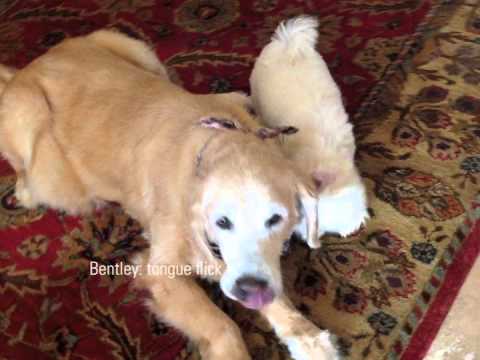Dogs are constantly communicating with body language. It’s helpful and fascinating when you know what it all means. Polite play behavior can look and sound fierce. If you understand what you’re seeing, you’ll be able to tell if you need to step in the calm things down or if everything is fine despite the sounds and teeth you’re seeing.
Being a dog & data dork myself, I could watch videos like this all them time. I spotted a number of behaviors that weren’t pointed out in the video that also tell you how the playtime is going. What do you see happening? Look for:
- hip checks, where the dog swings its hip towards the other dog
- muzzle fencing play biting, snout jousting, where teeth are shown and muzzles are waved around, but no actual tooth contact may even place
- most of the time is spent playing side-by-side, rather than head on, which can be more confrontational
- the extended period of time Bentley, the Golden Retriever, spends in a down position is a form of self-handicapping so that the “fight” is fair
- I spotted “whale-eye” from both dogs, this is the silly “I’m-bat-shit-crazy” eye-rolling they do when the whites of their eyes show
- lots of play breaks that can last only a few second
- blinking from Lacey the puppy to break any tension after she got too pushy
Want to learn more? Check out this super-useful book on canine body language.
